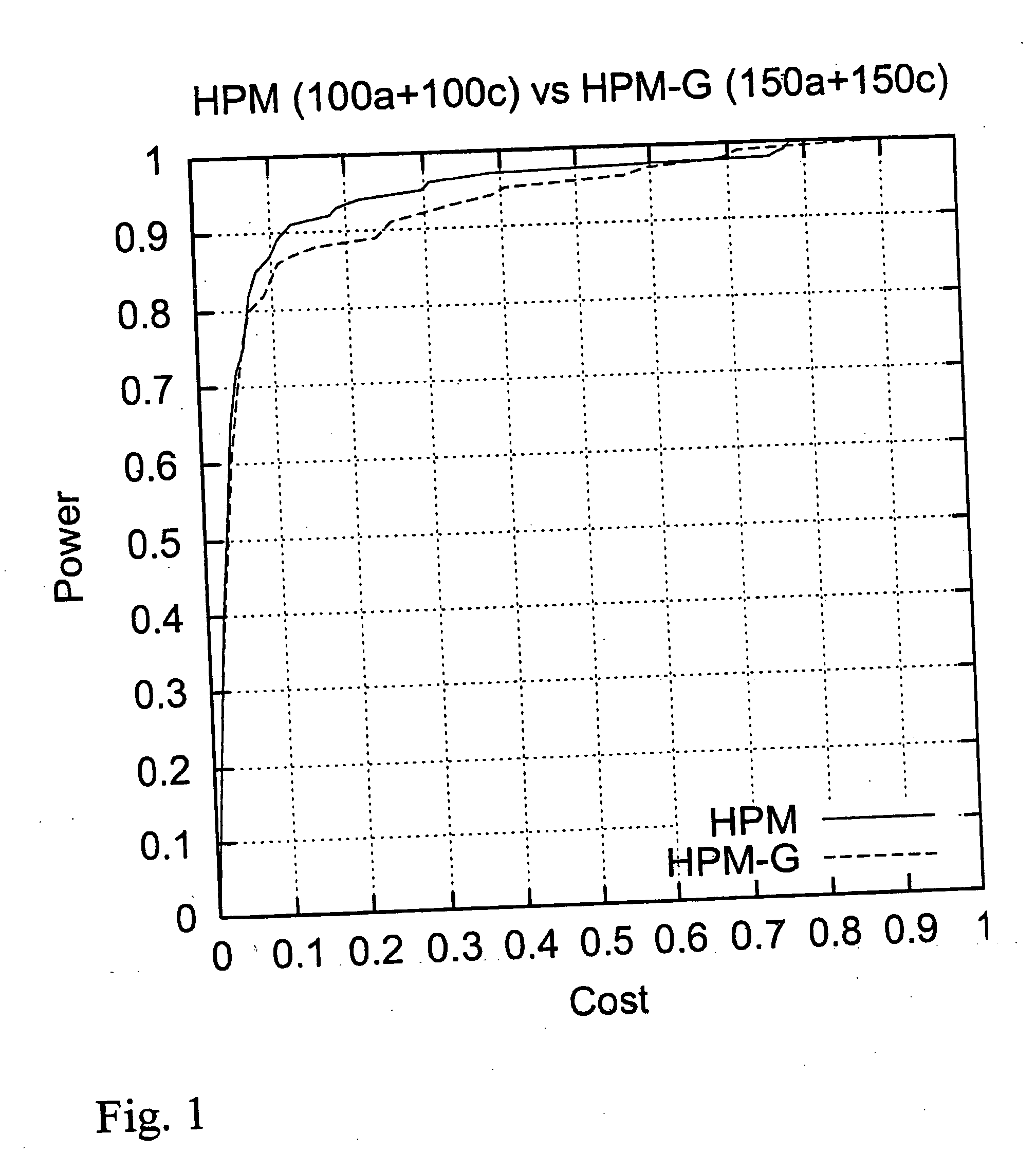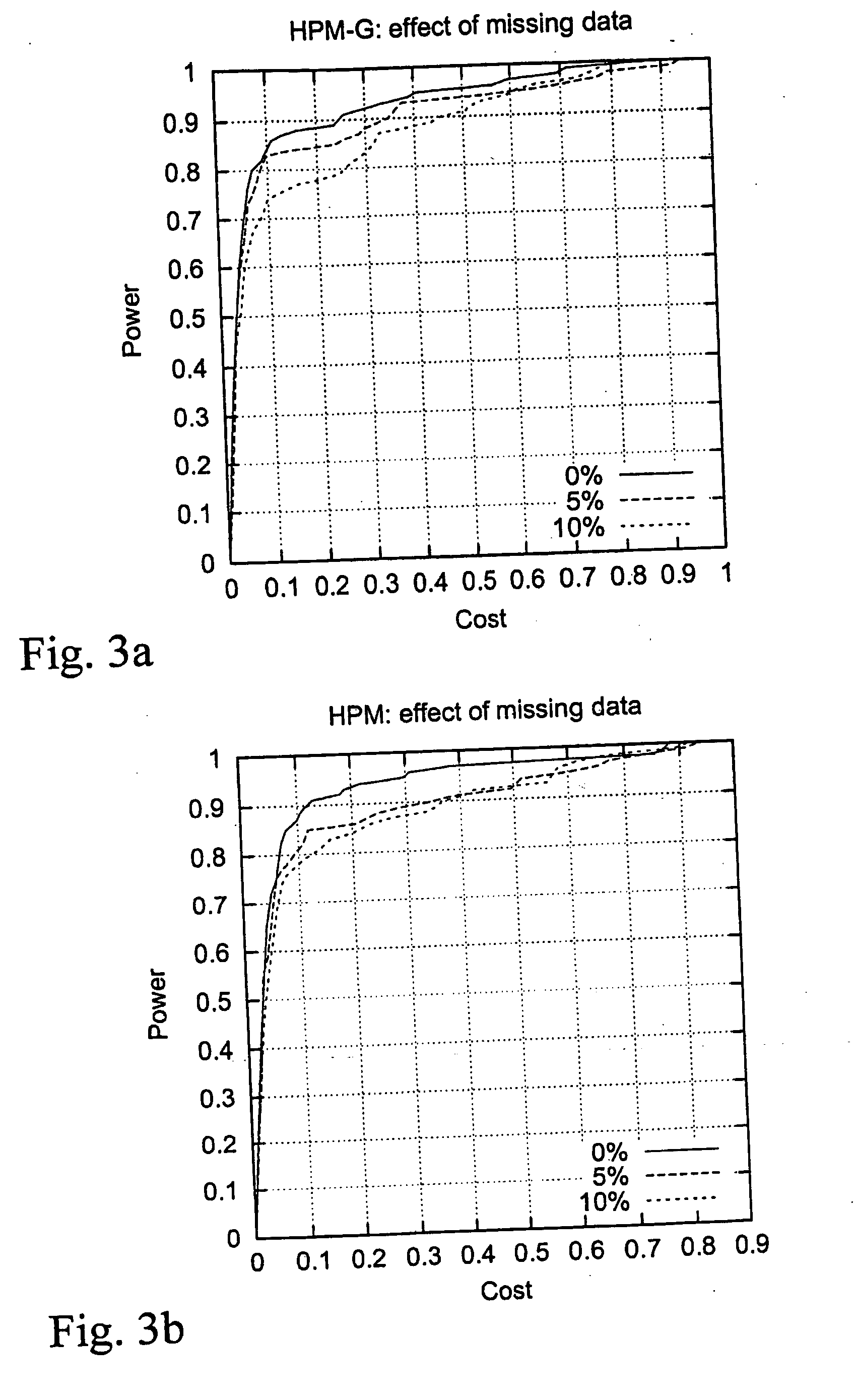Method for gene mapping from genotype and phenotype data
a technology of genotype and phenotype, applied in the field of gene mapping from genotype and phenotype data, can solve the problems of affecting the accuracy of the data, the impact of real data violations, and the inability to consider the association of one region at a time, so as to avoid the technical difficulties, costly and sometimes impossible steps, and the effect of model-free and computationally effectiv
- Summary
- Abstract
- Description
- Claims
- Application Information
AI Technical Summary
Benefits of technology
Problems solved by technology
Method used
Image
Examples
example 1
Simulated Data Sets
[0120] We evaluated the performance of the proposed HPM-G method with simulated data sets that correspond to a recently founded, relatively isolated founder subpopulation. Simulation of a population isolate was chosen, since it is recommended as the study population for LD studies. However, the method can be applied to any population that is suitable for LD analysis, since no assumptions are made about the population structure.
[0121] An isolated founder population, which grows from the initial size of 200 to 100,000 individuals in 20 generations, was simulated.
[0122] The population pedigree was first generated assuming distinct generations and ex-ponential growth of the population size. In each generation, the parents of the newborn individuals were randomly selected from members of the previous generation, with the exception that whenever a parent with at least one child was chosen, his / her spouse was always forced to become the other parent of the child. This...
example 2
Comparison to HPM
[0132] The localization accuracy was explored by plotting curves similar to power graphs:
[0133] the height of the curve shows the fraction of data sets for which the localization was successful, as a function of the length of the predicted region. The sample consisted of 150 affected and 150 control genotypes. The maximum length of a pattern was 7, and one gap of one marker was allowed. The association threshold was set to 10.
[0134] These numbers were based on experimentation. For comparison, we also show the corresponding curve for HPM with ⅓ smaller sample size, and thus equal genotyping cost (FIG. 1). With HPM we used association threshold 9, the parameters for the patterns were the same than those used with HPM-G.
[0135] The results show that HPM-G has a high accuracy, and that it is extremely competitive even in comparison to state-of-the-art methods that use explicitly haplotyped data.
example 3
Effect of Sample Size
[0136] The effect of sample size was examined by experimenting with sample sizes of 100+100, 150+150, 200+200 and 300+300 people (FIG. 2a). FIG. 2b shows the corresponding results for HPM.
[0137] HPM-G performs well even with only 100+100 genotypes. On the other hand, if the amount of data is increased, the accuracy is improved.
PUM
| Property | Measurement | Unit |
|---|---|---|
| Fraction | aaaaa | aaaaa |
| Fraction | aaaaa | aaaaa |
| Weight | aaaaa | aaaaa |
Abstract
Description
Claims
Application Information
 Login to View More
Login to View More - R&D
- Intellectual Property
- Life Sciences
- Materials
- Tech Scout
- Unparalleled Data Quality
- Higher Quality Content
- 60% Fewer Hallucinations
Browse by: Latest US Patents, China's latest patents, Technical Efficacy Thesaurus, Application Domain, Technology Topic, Popular Technical Reports.
© 2025 PatSnap. All rights reserved.Legal|Privacy policy|Modern Slavery Act Transparency Statement|Sitemap|About US| Contact US: help@patsnap.com



